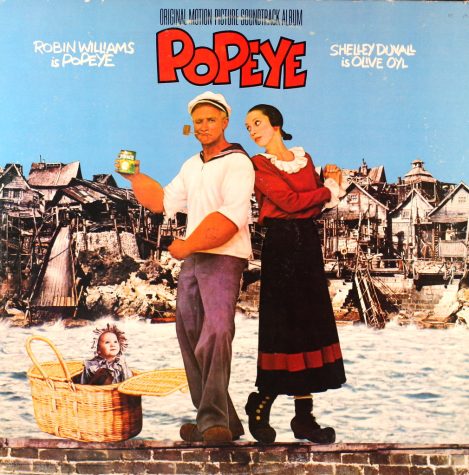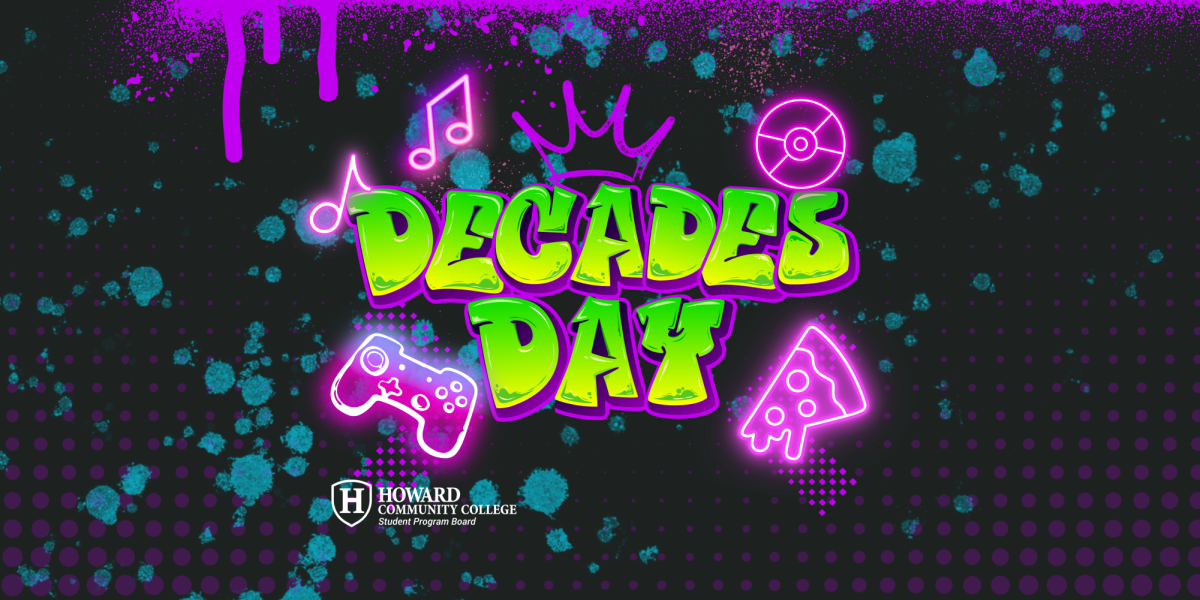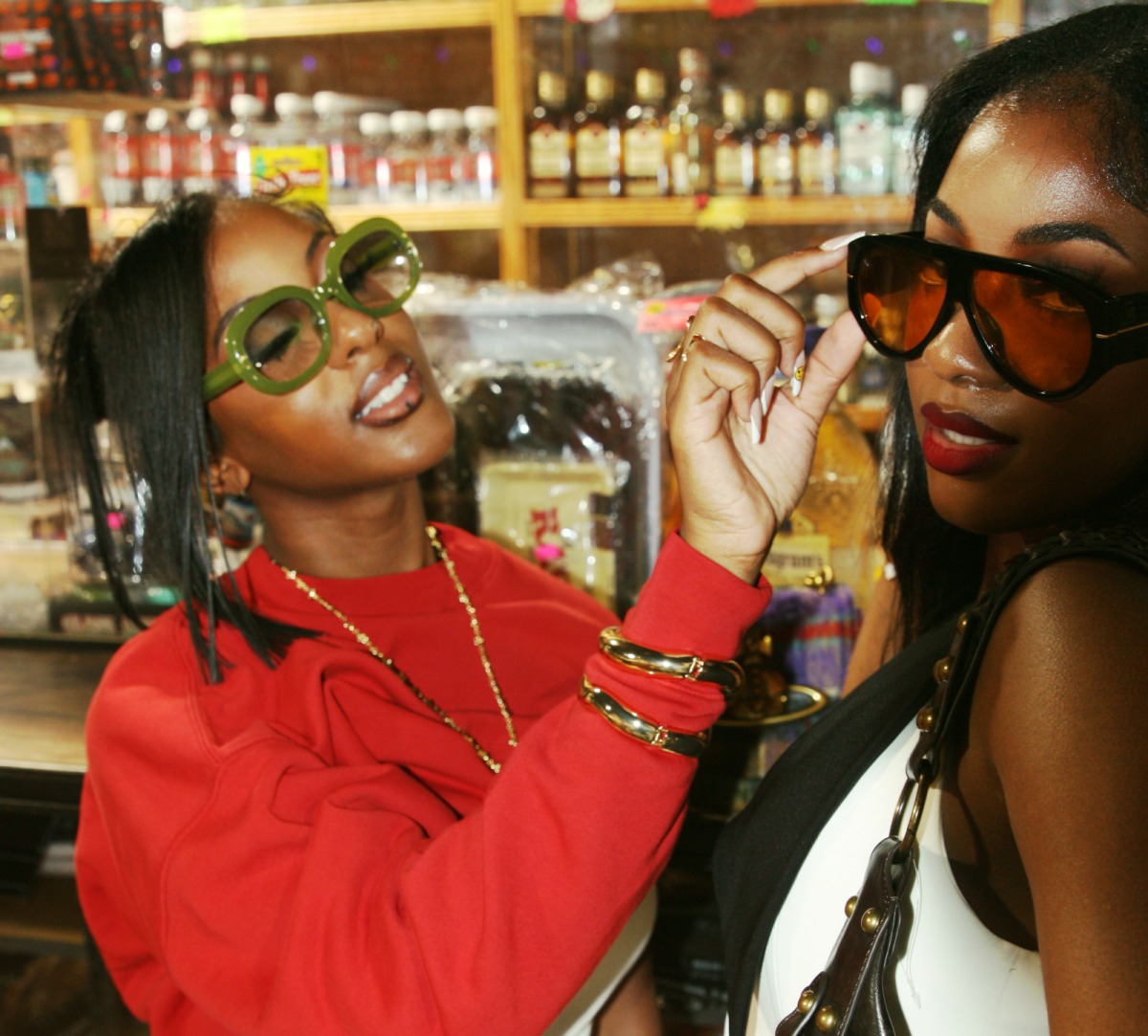“Popeye” Review
It yis what it yis.
Popeye art done by me (because the copyright on this film is bizarre)
November 10, 2022
When I first told my mother I would be making a review on “Popeye” from 1980, her reaction could simply be put as “Okay… Why?” It’s a film from 40 years ago, largely forgotten by everyone, now being told to an audience largely born years afterwards with little intention to watch it. I may be a young person myself, but why should I cover something like this that no one else has any interest in?
And to tell the truth, I honestly don’t have much reason to, except for the fact that the film just fascinates me. It’s a strange film, one that stars a young up-and-coming Robin Williams and a Shelley Duvall, fresh off her haunting performance in “The Shining.” It’s a film for families and general audiences directed by a New Hollywood outcast with no business making a family-friendly film. It’s a film that’s a live-action adaptation of a cartoon long before that became a wide trend and before a splurge of CGI. And it’s a film which, for all my fascination with it, ultimately ends up being just okay.
For a bit of context, “Popeye” is a movie based on the classic cartoon and comic franchise “Popeye the Sailor Man.” If you know about Popeye at all, it’s likely through those and those alone. The franchise followed the adventures of the titular sailor man, with a nigh unintelligible manner of speech and an ability to become powerful in a pinch by eating a can of spinach. He’d get into various scrapes and vie for the heart of the lanky Olive Oyl against his hulking arch-rival, Bluto.
The story starts with Popeye arriving in the coastal town of Sweethaven, as a part of his quest to find his long lost father. He takes a room in the family home of the Oyls, who are in the midst of trying to wed Olive to Bluto. Bluto manages the town in the name of a mysterious Commodore, imposing high and ridiculous taxes on its populace. From there, the story trundles along for nowhere in particular, with plot points arising, being put on the back burner and being resolved rather quickly. It plays out less as a whole story and more like a series of individual cartoons that loosely follow one another. Its climax only distinguishes itself as one by just being the last part of the movie and having a comparably grander spectacle than the rest of the film.
While many movies of this genre hone in on singular interactions between characters, “Popeye” boasts a series of cartoon slapstick and adventures. This is the brunt of the film’s quality, and the aspect that intrigues me, for compared to other films which try to impose the realm of live-action onto a cartoon, this film tries to impose the cartoon on the live-action realm. It attempts to be a perfect translation of the cartoon within a live-action space.
The cast is the most obvious example of this. While Robin Williams and Shelley Duvall may sound at first like a bizarre pick for people to play Popeye and Olive Oyl, in practice, they turn out perfect. The late great Williams’ manic energy, sputtering speech and impressive physicality in flipping and diving, makes him perfect as the sailor man. Duvall, likewise, with her gangly body and ungraceful appearance, fit Olive like a twig in a stick-shaped hole. The other actors like those playing Bluto or Wimpy capture their respective cartoon counterparts with similar canniness within the confines of our world, added on with costumes that replicate their outfits even down to absurdly large shoe sizes. Popeye himself is given large prosthetic forearms to mimic the original character’s stockiness.
They all play out and accompany the style and action of humor that, once again, feels straight out of the original shorts. There are simple sight gags that follow some of the logic and silliness of those characters, such as when Popeye admires a frame and speaks about his father, only for the reveal that the frame is empty, with “me poppa” scrawled on it. But more impressive is the exaggeration and slapstick, following not only set-up for them, but attempting to replicate the “physics” of them. Bluto for instance, giving an idea of his sheer size, will sometimes be put into a forced perspective to make him appear like a giant, such as being behind a door frame too small for him. Kicks and punches will often send people soaring or transform, such as where Popeye, spinning around in dizziness, is “drilled” through the dock by a raging Bluto, falling down and crashing onto a boat below.
It’s impressive, especially in a time before CGI would make these far easier to pull off, and the filmmakers don’t pull any half-measures in these recreations. The set of the town of Sweethaven is impressively designed as the setting of a silly seaside town, and whole parts of it are crushed or destroyed as the film goes on for the sake of these gags. One moment that stood out to me in particular was a sight gag when Popeye and Olive return to her house after finding an abandoned baby, coming face-to-face with an enraged Bluto waiting to meet her. Seeing the two together with a child, he assumes the worse, and the camera goes to his perspective to show that he’s literally seeing red. Rather than go about the gag by tinting the shot itself red however, the filmmakers recreate the scene of Popeye and Olive at the doorway, with their clothes, the baby’s the entire doorway and even some buildings in the background all dyed or colored red. The effort put into bringing the physicality, logic and style cartoon to life here is truly staggering. They’ve brought as many elements of the cartoon into our world as possible.
But it doesn’t feel like it pays off.
While most of the sight gags and exaggeration work great, there is a stiffness or clumsiness to these. I say it’s a perfect adaption of the cartoon to live-action, but as with any translation, it might not hold the same weight in one place as another, and. while I often understand the types of gags they’re going for, it often doesn’t have the same amount of laughs as the cartoons. For instance, one man in Sweethaven tries to grab his hat but continually kicks it away, and while I get the idea of the joke (his shoes are too big and he’s just a plain dope), it just looks he’s kicking it on purpose rather than accidentally doing it, and so it just looks weird. Popeye lays punches into someone like a punching bag, but the way in which it’s shown on the film, the choreography becomes all too obvious. It’s not too bad, but for all the effort they put into bringing a cartoon to life, the final product feels only halfway there.
So what’s left is a film whose gags, by and large, are decent, but flawed in execution. When that was intended to be the bulk of the film, what else can be said for the rest of it?
Quite simply, very little. As mentioned before, the plot, for what it’s worth, is weak and split. It drifts along like a raft in the ocean, going from one scene to another without much connection. The characters serve as straight translations of the cartoons, and as a result, they don’t have much in terms of development. The only notable examples of development in the film are a rather simple relationship between Popeye and Olive, a conflict of Popeye getting the townsfolk of Sweethaven to accept him, and the origins of Popeye loving spinach, most all of which are resolved anticlimactically. Naturally, a lot of this is because it’s a zany family comedy film, with the humor meant to be the main driving force, but when it’s as flawed as it is, the flimsiness of this plot becomes all too apparent.
You may have noticed that I’ve neglected the music part of this supposed musical until now. That’s because I believe the filmmakers did too.

Harry Nilsson, a famous singer-songwriter most popular in the early 1970s, composed the musical numbers for the film. I actually do like listening to him, but for this film, the quality seems rather lackluster, and it feels as if the filmmakers on the project didn’t even want it to be a musical. Songs like “He’s Large” or “He Needs Me” toe the line between having a cutesy, awkward charm and sounding flat out childish, with the chorus just repeating a word repeatedly. The “song” “Kids” is the most baffling. It’s “sung” by the Commodore near the film’s end, only he doesn’t actually sing over the music, but rather… rants, in a way that maybe acknowledges the instruments and somewhat has a structure that implies there is some sort of verse and chorus? But otherwise, it sounds as if he forgot to begin the song, or that he was even in a song to begin with. Even with the accompaniment of a few good or competent tunes, like “I’m Mean” or “I Yam What I Yam,” the choreography and performance of these numbers on screen are delivered in such an unimpressive fashion or face the same camerawork issue as with other gags. Most either have the characters shuffling lightly or swaying, or just performing another action while singing the song.
But in spite of all these critiques, “Popeye” is not a bad movie. It’s fine, and there’s some entertainment to be had at least once, whether just as a regular movie watcher or someone with an interest in film looking at the craft and how how poor execution can ruin great effort. But a good example is not always a great work, and there’s not much worth revisiting after the film’s credits come up, and really, there are better films that pull off what “Popeye” does to far better success. And so, “Popeye” remains as an oddball of a film.
Hmm, perhaps I actually should have reviewed something else.







